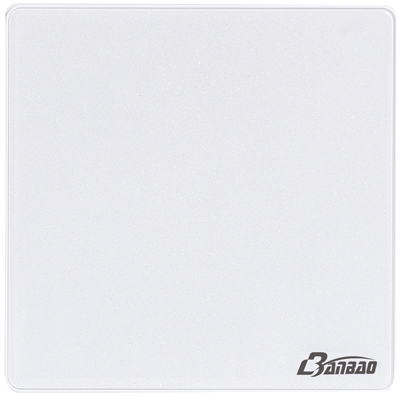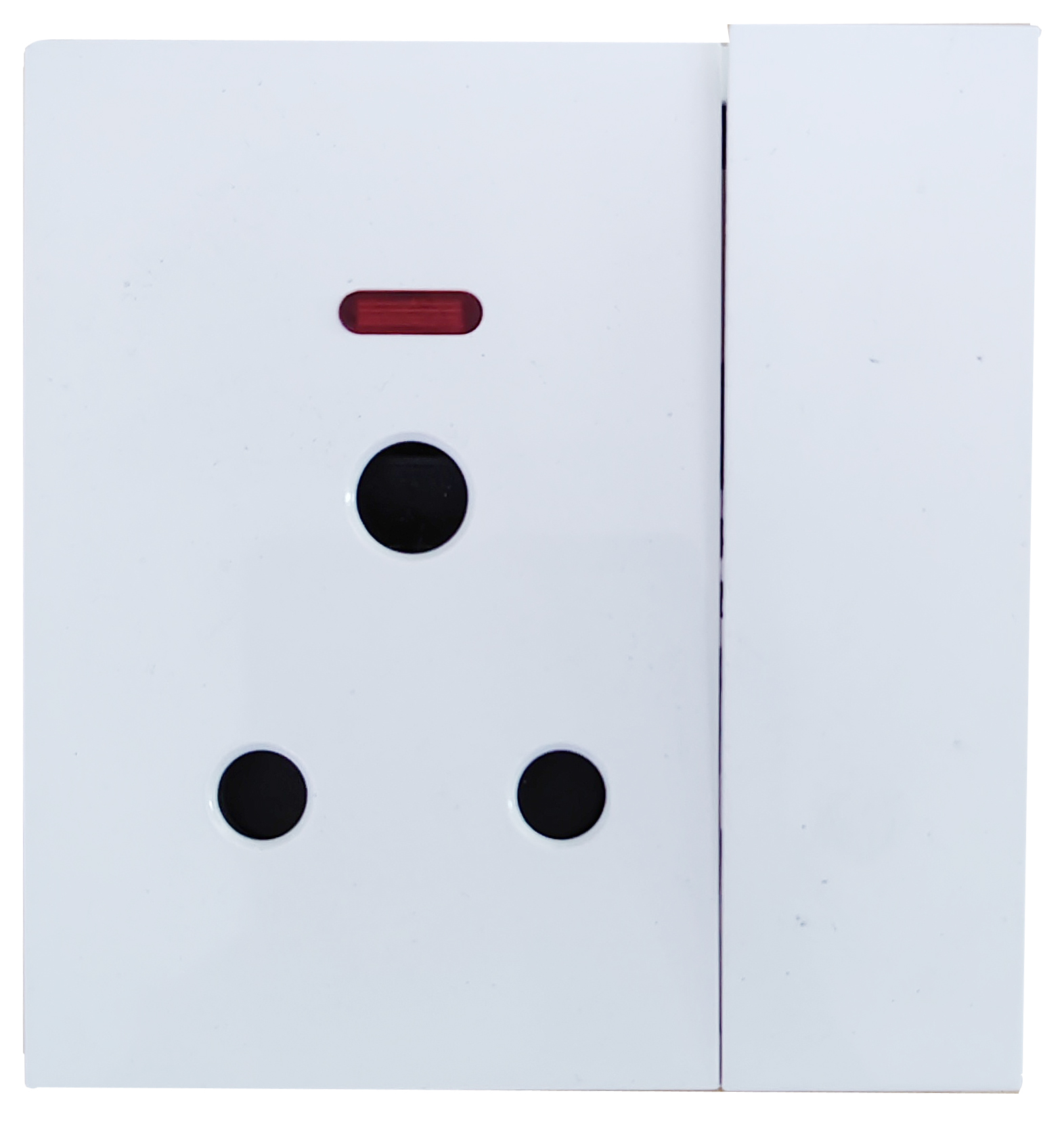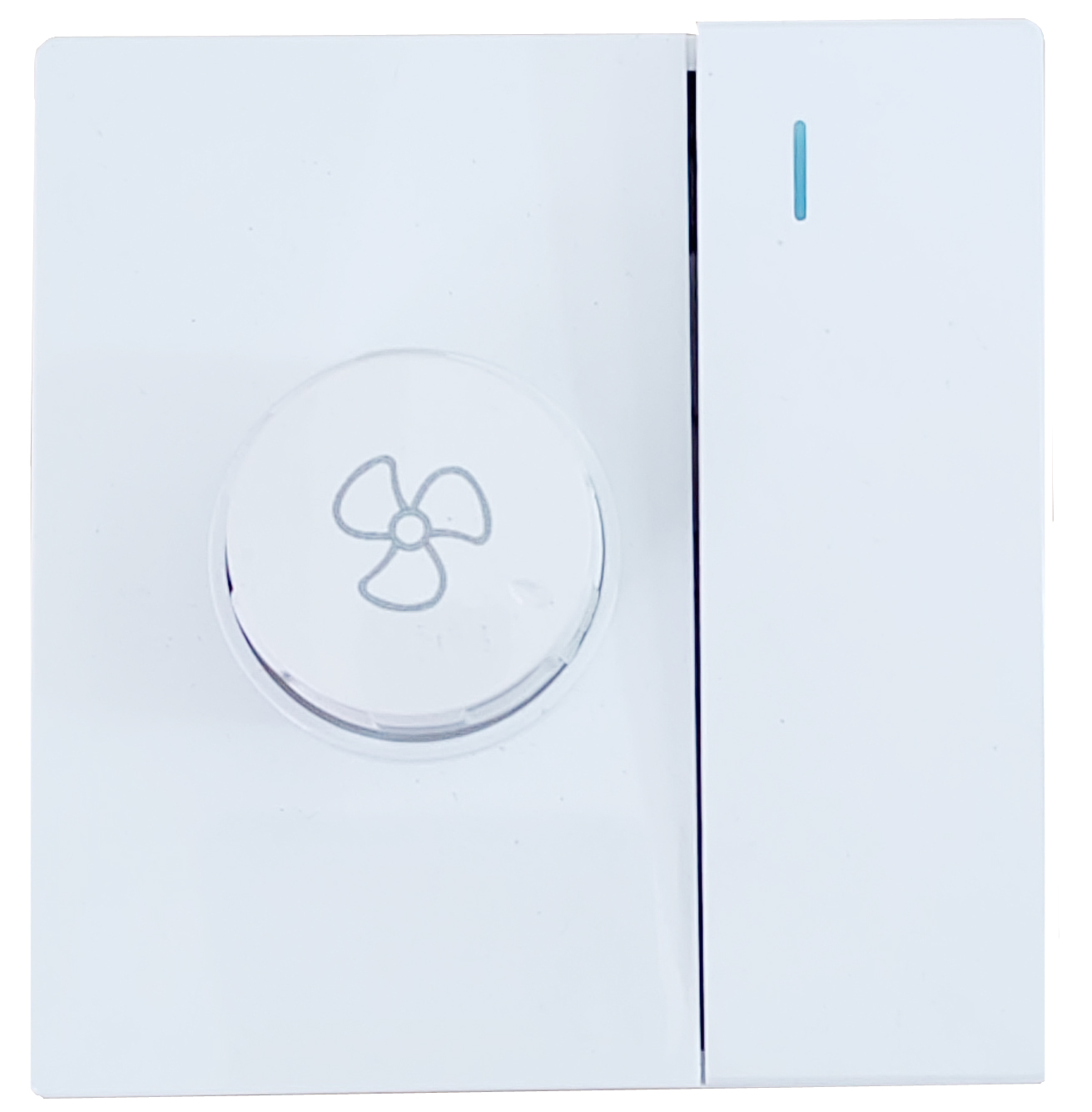In the UK's everyday electrical system, UK wall sockets are among the most frequently encountered electrical installations. Many newcomers to the UK notice a striking feature: many UK wall sockets have individual switches, some with red indicator lights, others without. However, not all UK wall sockets have this switch, resulting in a situation where "some have it, some don't."
This raises many questions: Why do some UK wall sockets require switches while others don't? What is the purpose of the switch? Does the absence of a switch mean unsafety? Does the difference affect the user experience?
This article will delve into the reasons why some UK wall sockets have switches and others don't, from multiple perspectives, including UK building electrical standards, wall socket structure, circuit safety design, and differences in installation scenarios. It will systematically explain these factors, providing readers with authoritative, clear, and logically rigorous explanations.

Why Do Some UK Wall Sockets Have Switches?
In the UK, whether a wall socket has a switch depends on electrical design codes, the type of socket, and its intended use. Many people believe that a switch is standard on UK wall sockets, but in reality, it's not mandatory. The inclusion of a switch is primarily based on the following factors:
1. Safety Considerations: A switch in a UK wall socket allows users to cut off the current without unplugging the device, reducing the risk of arcing or accidental operation.
2. Compliance with Specific Circuit Structures: In some home circuit designs, the socket may not have a separate circuit breaker. Therefore, a built-in switch enhances ease of use.
3. Control Device Requirements: Some UK wall sockets are designed to control fixed appliances such as refrigerators, washing machines, or heaters, and therefore include a dedicated switch.
4. Traditional Usage Habits: In the UK, many households use sockets with switches, and building companies prefer socket styles that conform to local customs.
However, UK standards do not mandate that all UK wall sockets must have a switch; therefore, some sockets without switches are perfectly compliant.
Where are UK wall sockets with switches more commonly found?
Switched wall sockets are not common in all rooms. They are more frequently found in:
• Bedrooms
• Living rooms
• Kitchen countertops
• Office environments
UK wall sockets in these locations often feature a red indicator light and a separate control switch for visual confirmation of device power. Especially in kitchens, where the environment is more complex and a more explicit control method may be needed, switched sockets are more prevalent.

Where are unswitched UK wall sockets more common?
Unswitched UK wall sockets are more common in:
• Concealed sockets (such as behind built-in furniture)
• Certain modern minimalist interior designs
• Specific commercial areas
• Low-height or non-primarily used sockets
• Floor sockets or sockets inside cabinets
These sockets prioritize aesthetics, structural simplicity, or specific installation requirements, and therefore may opt for unswitched versions.
Why are UK wall sockets typically designed with switches?
While not mandatory, the widespread use of switched designs in UK wall sockets is based on long-standing electrical safety principles. The UK has a well-developed home circuit protection system (such as loopback wiring), so adding a switch to the socket panel can further improve ease of use and safety.
The main advantages of a UK Wall Socket with a switch include:
1. Quick Power Cut-off: Power can be cut off without unplugging the appliance, reducing the risk of arcing.
2. Energy Efficiency: Although modern appliances consume less power in standby mode, users can still directly turn off the power supply to appliances using a switch.
3. Visual Alert: UK Wall Sockets with red indicator lights allow users to easily determine whether an appliance is powered on, avoiding accidental touches or misoperations.
4. More Suitable for Fixed Appliances: In the UK, some high-power fixed appliances (such as dishwashers, boilers, and electric heaters) are often controlled via sockets with switches.
Therefore, UK Wall Sockets with switches are a common design, rather than a mandatory requirement.
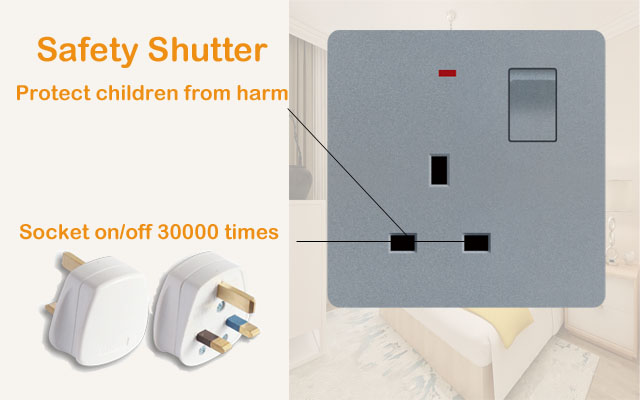
Why can UK Wall Sockets be without switches?
While the advantages of having a switch are obvious, the UK electrical standard (BS 1363) does not mandate that sockets must have switches, therefore UK wall sockets without switches are perfectly legal and compliant.
The following are common reasons why UK wall sockets do not have switches:
1. No switch needed in specific scenarios
Some permanently powered devices, such as network routers, alarm systems, or smart home hubs, do not require frequent power interruptions, making a switchless design more reasonable.
2. Concealed socket location
Staying behind furniture or in hard-to-reach locations makes a switch less useful.
3. Modern minimalist design trend
Interior designs may lean towards minimalism, and sockets without switches appear cleaner.
4. Existing control methods
Some dedicated circuits have separate wall-mounted isolating switches, so a separate switch for the socket is unnecessary.
Is there a difference in safety between UK wall sockets with and without switches?
Many people believe that sockets with switches are safer than those without. However, from a standards perspective:
As long as they meet BS1363 and BS7671 requirements, UK wall sockets, whether with or without switches, are inherently safe.
Safety is determined by the following factors:
• Internal structure of the socket
• Quality of copper contacts
• Plug fuse protection
• Circuit protection devices such as RCD/MCB
• Proper wiring and installation
In other words: The advantage of sockets with switches lies primarily in ease of operation and controllability, rather than a decisive difference in safety.
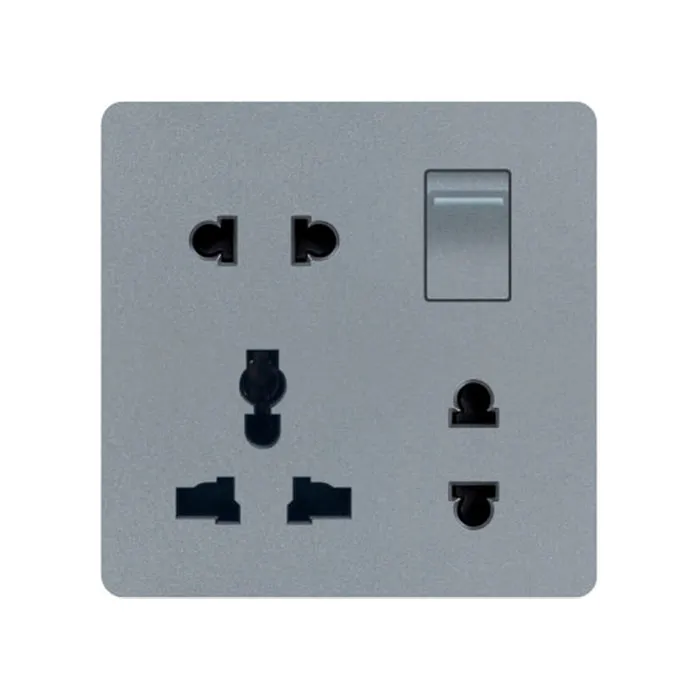
What are the benefits of using UK wall sockets with switches?
Especially in home settings, UK wall sockets with switches are widely recognized as a more convenient and intuitive choice.
1. Power can be switched off without unplugging
Reducing wear and tear and extending socket lifespan.
2. Avoiding standby power consumption
Although modern devices have very low standby power, the circuit can still be controlled via a switch.
3. Suitable for devices that are difficult to plug and unplug
For example, heavy or stationary appliances.
4. Additional Power Consumption Reminders Available
Especially models with red indicator lights, clearly showing users the power status.
Are UK Wall Sockets Without Switches Ineffective?
UK Wall Sockets without switches are not necessarily ineffective; in fact, they are often more suitable in the following situations:
• Sockets are hidden behind furniture
• Appliances do not require frequent power interruptions
• A minimalist aesthetic is desired in the space
• A multi-level circuit control system is used
• Devices are controlled by independent switches/isolators
Therefore, a switchless design is a reasonable choice.
Is a Switched UK Wall Socket a Unique British Practice?
Switched sockets are indeed a typical feature of the UK and some Commonwealth countries, but this does not affect their standard compliance. These include:
• The UK
• Ireland
• Malta
• Certain installation areas in Singapore
• Certain buildings in Hong Kong China
In these regions, switched UK Wall Sockets are very common. However, whether or not to include a switch still depends on installation requirements and building design principles, not a mandatory requirement.
Should all UK Wall Sockets be replaced with those with switches?
There's usually no single answer to this question, as the specific decision depends on:
• The location of the outlet
• The type of appliance used
• Whether frequent power control is required
• Whether the electrical system already has other independent control methods
For example, a UK wall socket located on a kitchen countertop is more suitable with a switch, while an outlet behind fixed furniture is better suited without a switch.
Therefore, it's perfectly normal for both types of outlets to coexist in the same household.
What purchasing options and pricing models do you support?
Zhongmei supports multiple purchasing models: single-unit purchases for retail samples, MOQ-based custom orders, and full wholesale contracts for bulk procurement. Pricing models include unit price discounts for large quantities, tiered pricing, and promotional discounts for new customers or seasonal purchases. As a supplier and factory, we can issue formal quotes with itemized prices, lead times, and shipping estimates.


